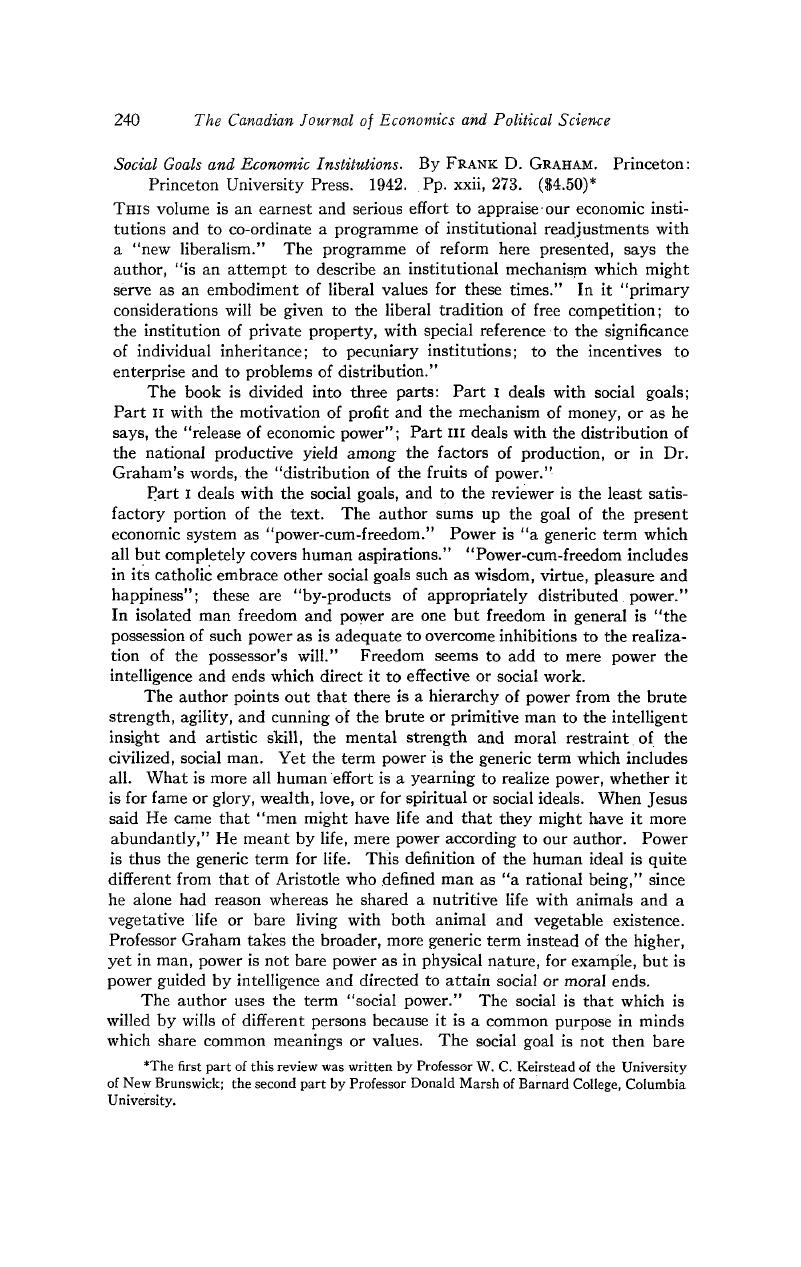No CrossRef data available.
Published online by Cambridge University Press: 07 November 2014

* The first part of this review was written by Professor W. C. Keirstead of the University of New Brunswick; the second part by Professor Donald Marsh of Barnard College, Columbia University.
1 He does indicate at one point (p. 227) that “continuous effective demand” is to be provided “in the manner suggested in Chapter V.” There is some evidence in this chapter that “stability in demand” for Dr. Graham means the maintenance of demand through government purchases, with no necessary correction of its inelasticity to the firm (pp. 89-94). This “Federal Recovery Corporation” plan is rejected (p. 94) in favour of commodity reserve money, but it is later reintroduced as a supplementary measure along with “a limited program of ad hoc public works” (p. 117). In any case, the maintenance of an inelastic demand is no answer to the oligopoly problem; it might maintain normal employment in oligopolistic industries, but this is unpredictable.
2 There is possibly a third solution which Dr. Graham would apply only to monopolies. Where “for technological or other reasons” monopolies are inevitable they should “be brought under government control.” A frank facing of the oligopoly problem might mean an indefinite extension of Dr. Graham's third solution to the whole field of oligopoly. What would happen then to the “liberal tradition of free competition” or private property or the “incentives to enterprise” can only be surmised.